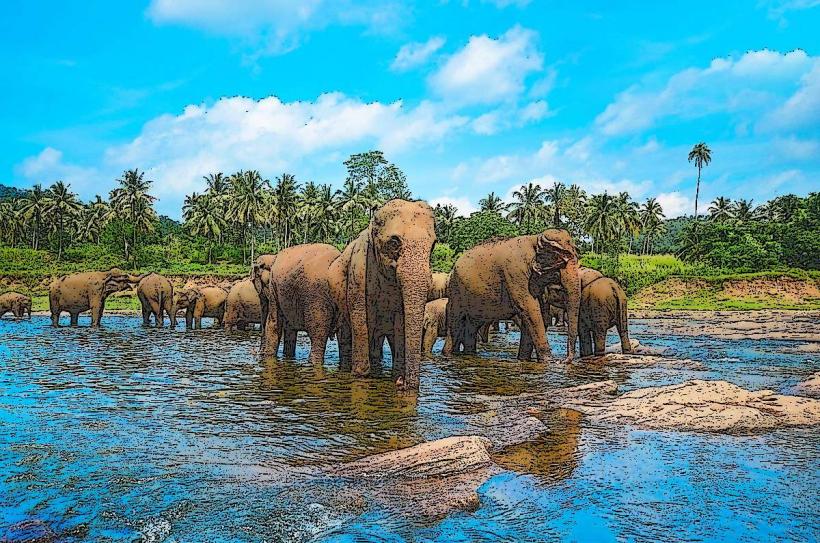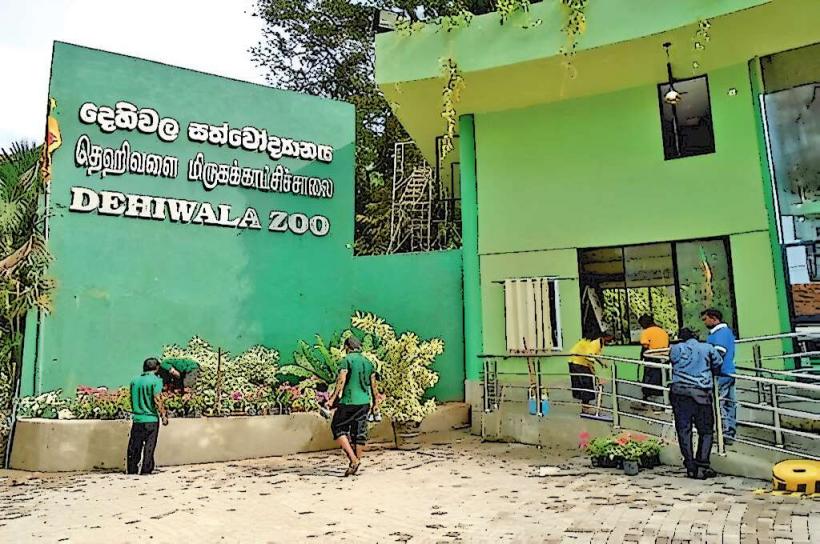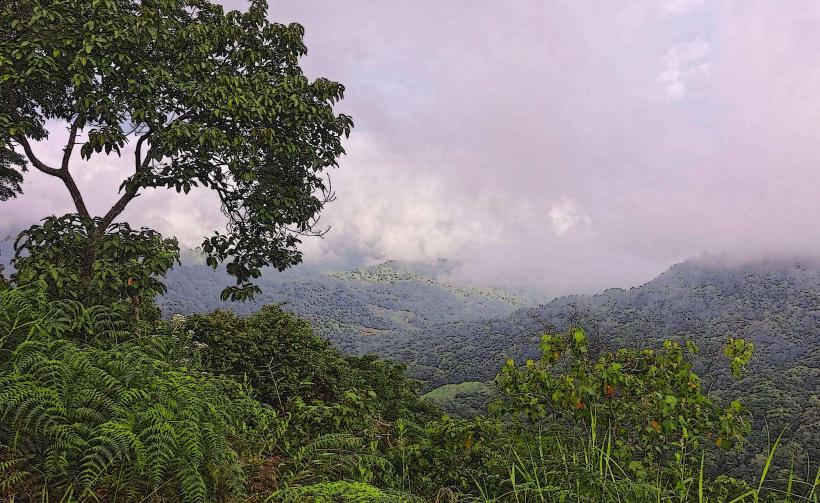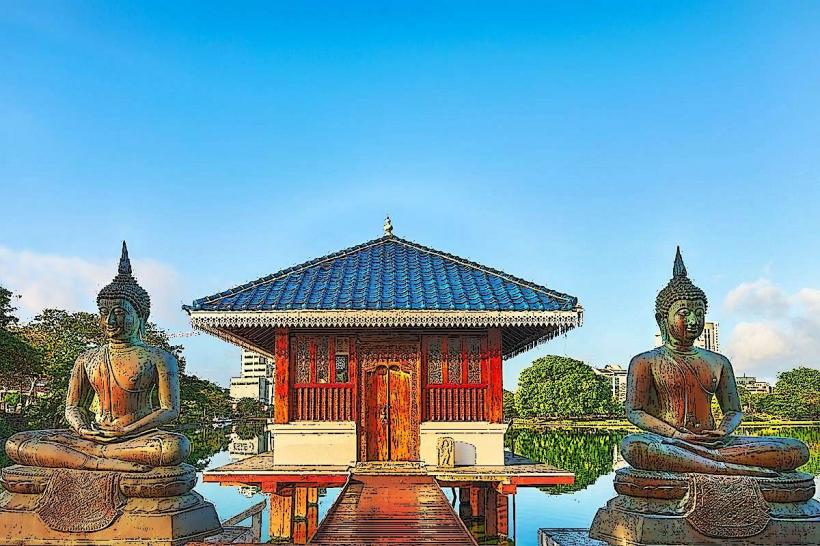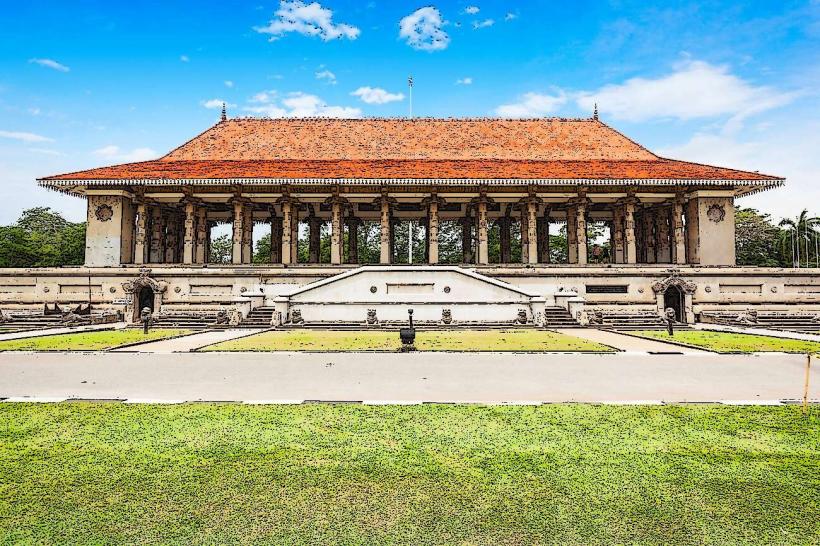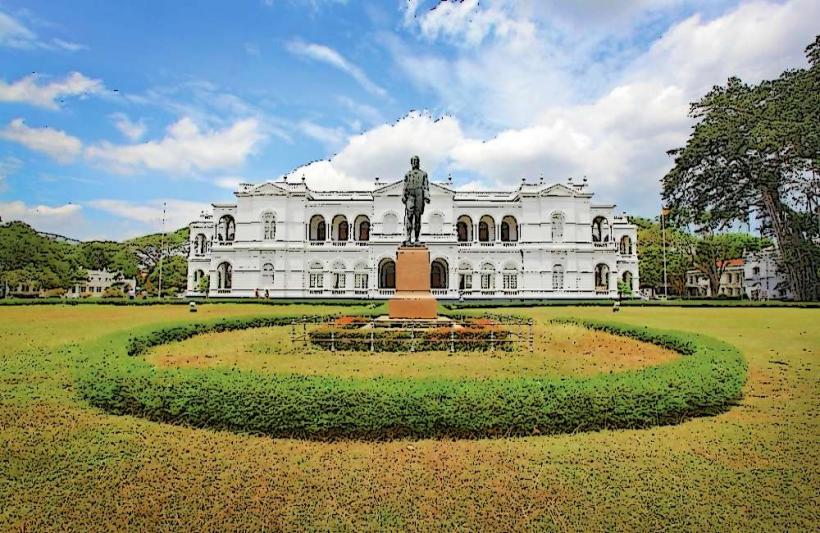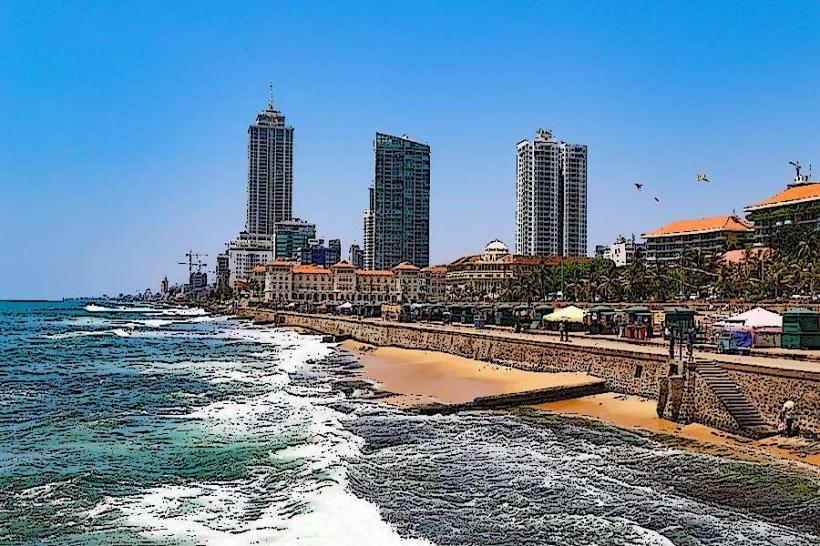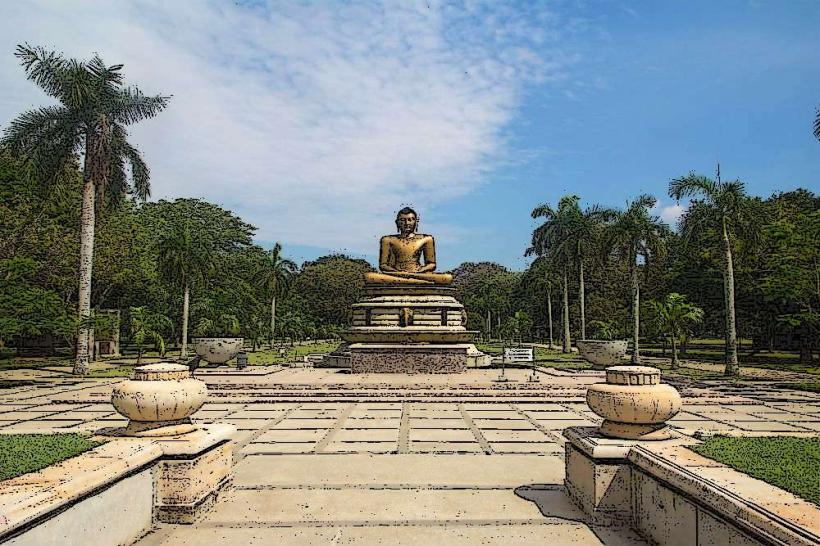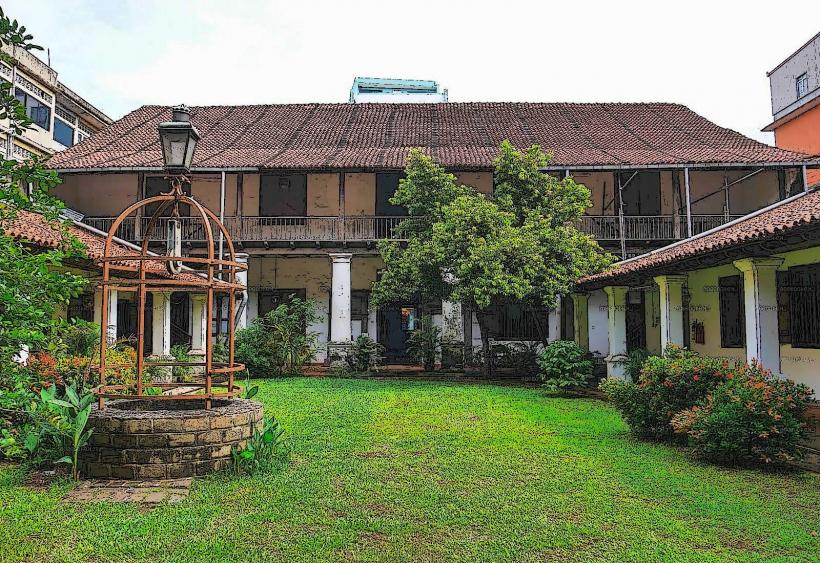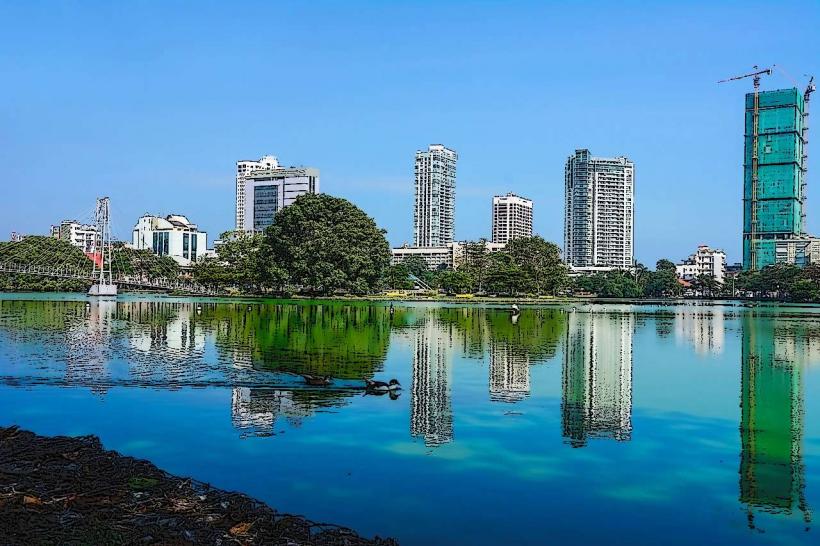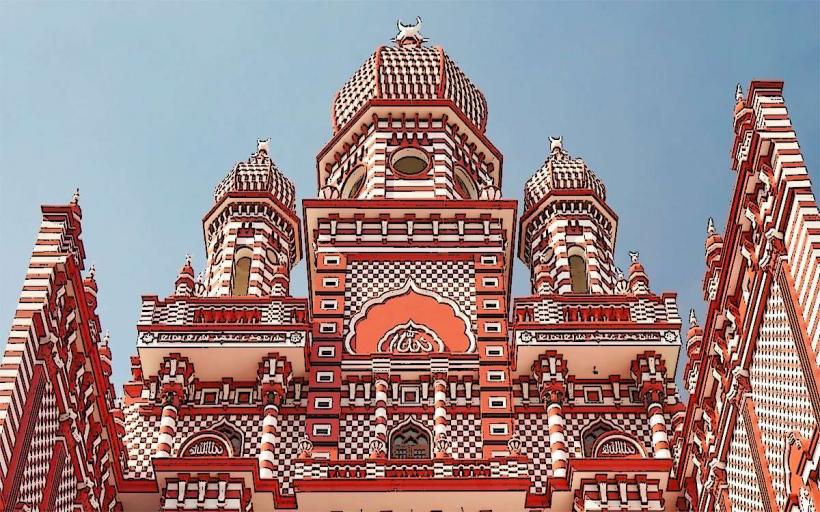Information
Landmark: Old Parliament BuildingCity: Colombo
Country: Sri Lanka
Continent: Asia
Old Parliament Building: A Landmark of Colombo's Political History
The Old Parliament Building in Colombo, Sri Lanka, is an iconic landmark that holds significant historical and political value. This architectural masterpiece, originally serving as the seat of the Sri Lankan government, stands as a symbol of the country's colonial past and the early years of its independence. The building is located in the Fort area of Colombo, offering a glimpse into the nation's political history.
Overview
- Location: The Old Parliament Building is located in the Fort area of Colombo, Sri Lanka, near the Galle Face Green and the Colombo Harbor. It faces the Indian Ocean and is a prominent structure in the city’s skyline.
- History: The building was constructed in the early 20th century during British rule in Sri Lanka and was originally used by the Legislative Council of Ceylon (the British colonial administration's legislative body). After Sri Lanka gained independence in 1948, it became the seat of the Sri Lankan Parliament until the new Parliament Complex in Sri Jayawardenepura Kotte was opened in 1982.
- Architecture: Designed in the neo-classical style, the Old Parliament Building is a fine example of colonial-era architecture, with elements such as grand columns, arched windows, and spacious verandas.
Key Features of the Old Parliament Building
Architectural Design:
- The building is an exemplary piece of neo-classical architecture, featuring grand columns, arched windows, and large verandas that provide a stately and imposing appearance. The facade of the building is adorned with classical detailing, making it one of the most recognizable structures in Colombo.
- The building’s design includes symmetrical wings and a central dome that is visible from various points around the city. The structure is built with limestone and brick, materials typical of colonial-era architecture.
Historical Significance:
- The Old Parliament Building served as the heart of Sri Lanka’s political life for several decades. It was the meeting place for the Sri Lankan Parliament from 1948 to 1982, when the country’s government moved to a new Parliament Complex in Sri Jayawardenepura Kotte.
- It was here that significant political decisions were made, including the drafting of the Ceylon Constitution (later Sri Lanka Constitution) and laws that shaped the modern state.
- Notably, the first Prime Minister of Sri Lanka, Don Stephen Senanayake, and later J.R. Jayewardene, the first President of Sri Lanka, were both instrumental figures in this building’s history.
The Assembly Hall:
- The central Assembly Hall of the Old Parliament Building is particularly notable for its grandeur. The hall was where members of Parliament would gather to discuss national issues, pass laws, and deliberate on political matters. Although it is no longer used for parliamentary purposes, the hall remains an important symbol of Sri Lanka's legislative history.
The Front Lawn and Ocean Views:
- The building’s expansive front lawn offers panoramic views of the Indian Ocean and the Galle Face Green, a large public park near the waterfront. This location was strategically chosen to give the Parliament Building both symbolic prominence and a scenic environment, reflecting the political and economic importance of the country at the time.
Cultural Heritage:
- As a colonial-era structure, the Old Parliament Building not only reflects Sri Lanka's history under British rule but also holds cultural significance as the site where Sri Lanka made the transition from a British colony to an independent nation. It remains a symbol of the country’s journey towards self-governance and political maturity.
Renovation and Preservation:
- In recent years, there have been efforts to preserve and maintain the Old Parliament Building, ensuring its legacy as a national monument. While it no longer functions as the seat of government, its historical preservation has allowed it to continue standing as a reminder of Sri Lanka's political development.
Nearby Attractions
Galle Face Green:
- A short walk from the Old Parliament Building, Galle Face Green is a large public park along the coast, perfect for relaxing, enjoying the sea breeze, and watching local events. It’s also an ideal spot to visit after exploring the Old Parliament Building.
Colombo Lighthouse:
- Located nearby in the Fort area, the Colombo Lighthouse provides a striking sight. Though not the original lighthouse, it is an important historical structure near the Old Parliament Building.
Old Dutch Hospital:
- The Old Dutch Hospital, one of the oldest buildings in Colombo, is a short distance away from the Old Parliament Building. It has been repurposed into a modern shopping and dining precinct while retaining its historical charm.
Galle Face Hotel:
- The Galle Face Hotel, located across the road from the Old Parliament Building, is one of Sri Lanka's oldest hotels and is a great place for a historical visit or to enjoy a meal with a view of the Indian Ocean.
Colombo Fort:
- The Colombo Fort area is home to a variety of colonial-era buildings, including the Clock Tower and several government offices. It is an area rich in history and architecture and is also within walking distance from the Old Parliament Building.
Visiting the Old Parliament Building
- Accessibility: While the Old Parliament Building itself is no longer open to the public for tours, visitors can still appreciate its architectural beauty from the outside. The area around the building is usually open to pedestrians, allowing for exploration and photography.
- Best Time to Visit: The best time to visit is during the morning or late afternoon, when the weather is cooler, and the building is well-lit for photographs.
- Nearby Amenities: The surrounding area is home to many restaurants, cafes, and shops, offering visitors a chance to explore the local culture and cuisine after visiting the Old Parliament Building.
Conclusion
The Old Parliament Building is an important symbol of Sri Lanka's political history, serving as the seat of government for several decades. Its neo-classical architecture, combined with its historical significance, makes it one of Colombo’s most iconic buildings. While it is no longer in use for legislative purposes, it continues to stand as a reminder of Sri Lanka’s colonial past and its journey towards independence. The building's central location, surrounded by other notable landmarks, makes it a key stop for anyone exploring the historical and political heritage of Colombo.


